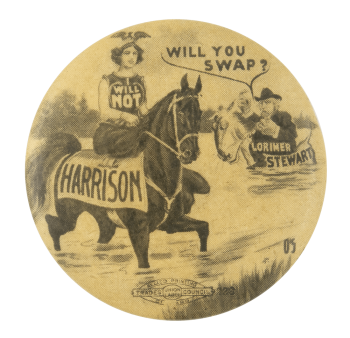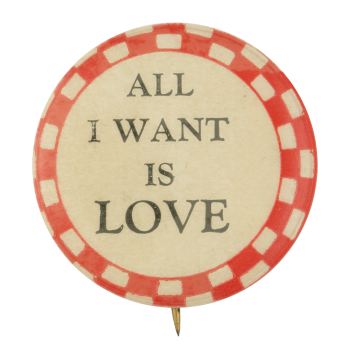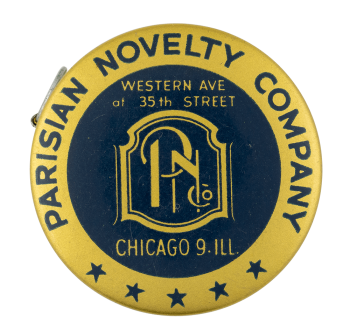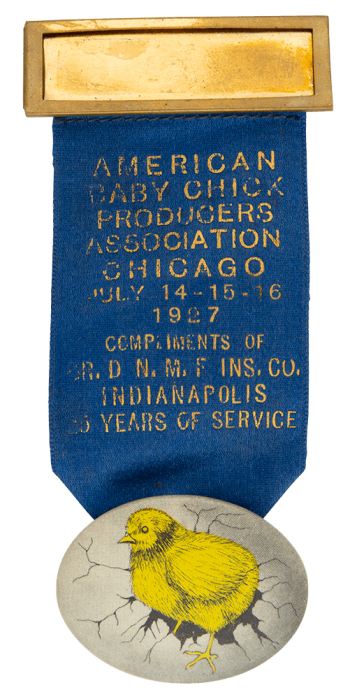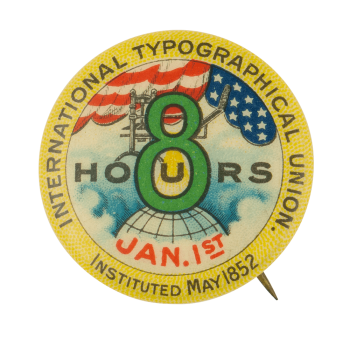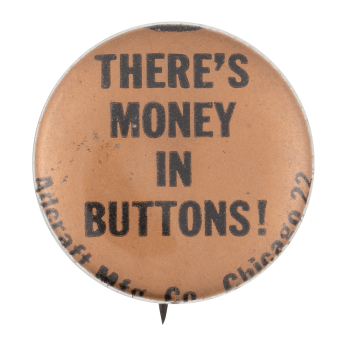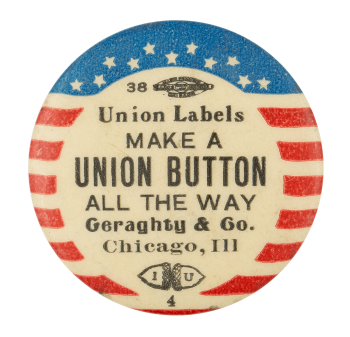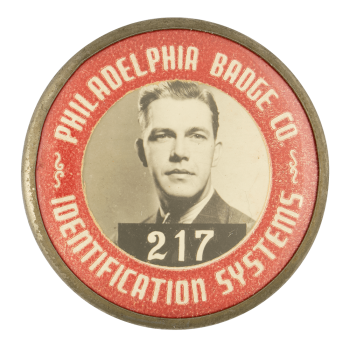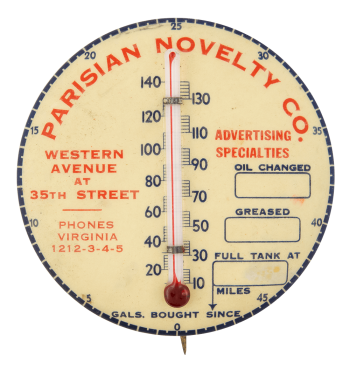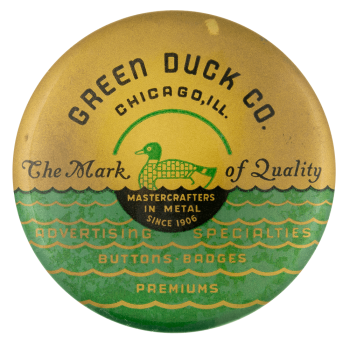Harrison Will You Swap
| Category | |
|---|---|
| Additional Images | |
| Sub Categories | |
| Text on Button | HARRISON WILL YOU SWAP? LORIMER STEWART 03 |
| Image Description | Illusttration of a woman wearing a headress with an eagle on it (the symbol of chicago) and text on her front on a dark horse with text on its side walking through water. In the background is another horse with a man in a hat riding it. |
| Back Style | |
| The Shape | |
| The Size | |
| Year / Decade Made | |
| Additional Information | In the Chicago mayoral election of 1903, incumbent Carter Harrison, Jr. ran as a Democrat against Republican nominee Graeme Stewart. The idiom “don’t change horses in midstream” encourages readers to stick with their original track or, in this case, the incumbent in the election. The Chicago symbol "I Will" modified to be “I Will Not” is seen riding on the back of Harrison while William Lorimer, Republican political boss, is sinking behind Stewart. Lorimer was asking the people of Chicago (represented by “I Will Not”) to drop Harrison for Stewart, but that idea was protested. The 1903 election was rife with political turmoil. Lorimer had been elected to the House of Representatives under illicit circumstances. Opponents demanded a recount and Stewart supported an injunction against the recount to support Lorimer. Reform-minded voters disapproved of this partisan gesture and helped reelect Harrison to his fourth of five terms as Mayor of Chicago. Stewart died two years later. Lorimer was later elected a U.S. Senator, but was convicted of bribery. “I Will Not” is a reference to “I Will," a goddess designed by Charles Holloway in 1892. Shown wearing a crown with a rising phoenix and the phrase “I will” on her breastplate, she was meant to represent the spirit of Chicago in the same way that Uncle Sam is a symbol of America. “I Will” was an unofficial symbol of the 1893 World’s Fair. Changing “I Will” to “I Will Not” was a dig directed at Lorimer that 1903 Chicagoans would have recognized instantly. |
| Sources |
Neil Gale, P. (2020). Chicago's "I Will" Motto and "Y" Municipal Device History.. Drloihjournal.blogspot.com. Retrieved from https://drloihjournal.blogspot.com/2017/05/chicagos-i-will-motto-and-y-…. Schnickler, E., Finegold, K., Katznelson, I., Shefter, M., Skocpol, T. (1995). Experts and politicians: Reform challenges to machine politics in New York, Cleveland, and Chicago. Princeton University Press. Winslow, C. Spaulding., Wilder, R. Everett. (1947). Early Chicago: as seen by a cartoonist. Chicago: Charles S. Winslow. |
| Catalog ID | CH0284 |

